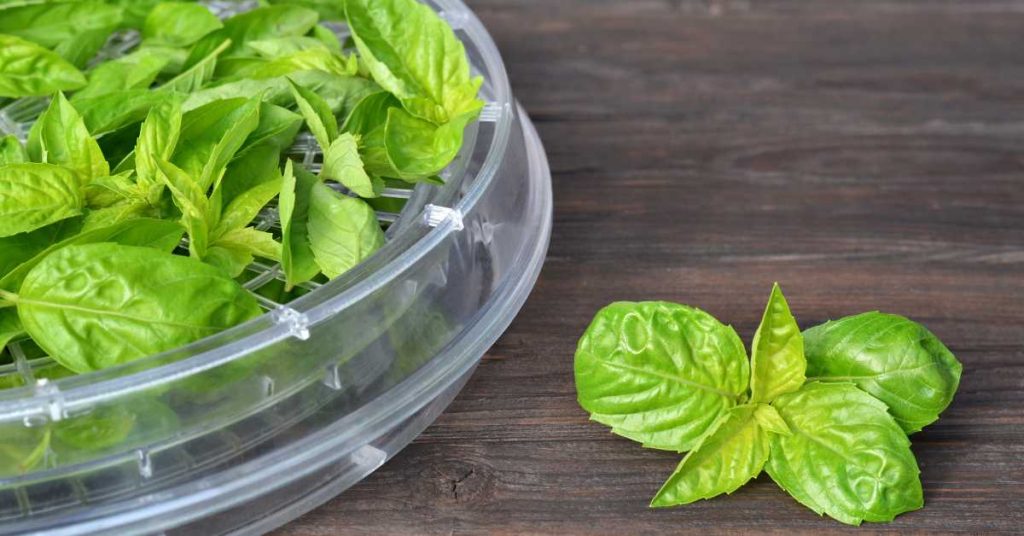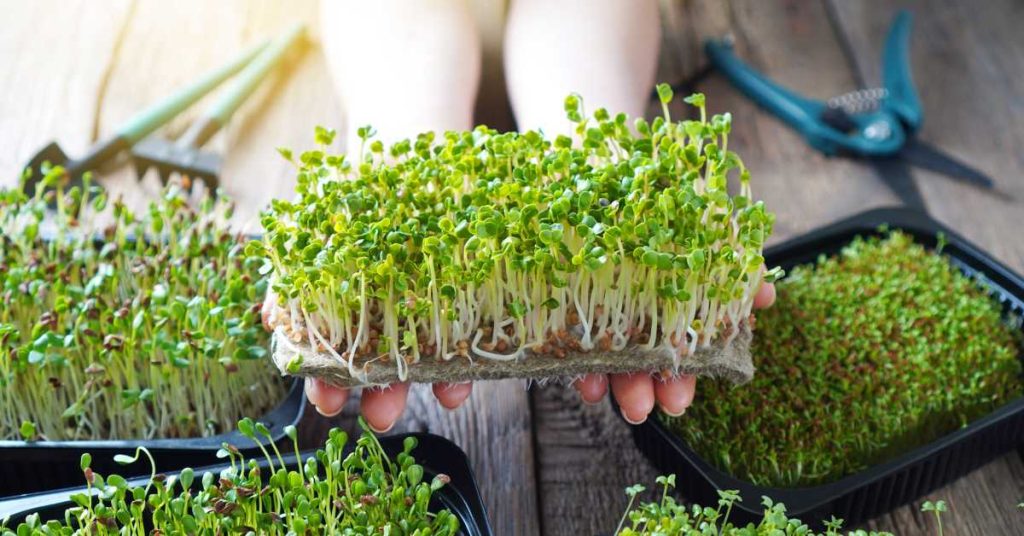Can You Dehydrate Microgreens?
Can you dehydrate microgreens? Yes, you can dehydrate microgreens to prolong their shelf life. Dehydrated microgreens will retain most of their nutritional value, although they will be a little bit less flavorful than fresh microgreens. To dehydrate microgreens, spread them out on a baking sheet and dry them in a low oven (200 degrees Fahrenheit) until they are crisp. Then store them in an airtight container.
If you’re into healthy eating, then you’ve probably heard of microgreens. These tiny greens are becoming more and more popular, and for a good reason – they’re packed with nutrients! But can you dehydrate them? In this blog post, we’ll answer that question and tell you everything you need to know about dehydrating microgreens. Keep reading to learn more!
What Are Microgreens?
Microgreens are the small, immature versions of regular edible greens, such as kale, spinach, and arugula. They can be grown from seeds and harvested anywhere between 1 to 3 weeks after sowing. Microgreens are high in vitamins and minerals compared to their adult counterparts – in fact, they can contain up to 40 times the nutrient content! They can also have a more concentrated flavor, making them a great addition to salads and other dishes.
Related: What Are Microgreens

What Is the Shelf Life of Microgreen?
The typical shelf life of a fresh-cut microgreen is anywhere between 5 and 14 days depending on how you handle them, store them, and the variety of the microgreens themselves.
Can You Dehydrate Microgreens?
The short answer is yes – you can dehydrate microgreens. The process is relatively easy and can help you preserve your fresh supply of greens for longer periods of time. It can also give them a different texture and flavor, making them an interesting addition to your meals.
Why Dehydrate Microgreens?
The main benefit of dehydrating microgreens is that it can help prolong their shelf life significantly. By removing the moisture from them, you can ensure that your greens will stay fresh for longer periods of time.
Dehydrated microgreens can also be stored in airtight containers and kept away from heat or light to preserve their flavor and nutritional value. This can be especially beneficial for those who live in hot or humid climates where fresh produce can spoil quickly.
Dehydrating microgreens can also give them a different texture and flavor, making them a great addition to salads, soups, or other dishes. Dehydrated greens can add an interesting crunch and intense flavor to any meal.

Do Microgreens Lose Nutrients when Dehydrated?
Yes, microgreens do lose some of their nutrients and potency when dehydrated. It is perfectly natural for an edible plant to lose nutrients when they are harvested and stored for future use.
When it comes to dehydrating microgreens, you are essentially drying them to make the microgreens shelf stable to last longer. When doing this you are removing the water content which can account for up to 90% of the weight of the microgreen.
By removing the water, you are also removing some of the vitamins, minerals, and antioxidants that are found in microgreens. However, dehydrated microgreens will still retain a significant amount of their nutritional value and can be a healthy addition to your diet.
How Do You Wash and Dry Microgreens?
When it comes to washing and drying your microgreens, the key is to be gentle. Rinse them in cold water and use a clean kitchen towel or paper towel to pat them dry carefully. You can also use a salad spinner to get rid of excess moisture, but make sure not to spin them for too long as this can damage the delicate leaves.
How to Dehydrate Microgreens?
Dehydrating your microgreens is relatively easy and can be done with just a few simple steps.
First, rinse the greens thoroughly to remove dirt and debris. Then, pat them dry with a paper towel or cloth.
Next, spread the greens on a dehydrator tray and set your dehydrator to its lowest temperature. Depending on the size of your batch, it can take anywhere from 8-16 hours for the microgreens to be completely dehydrated.
Once dried, remove them from the dehydration tray and store in an airtight container.

Can I Store Microgreens in Mason Jars?
Yes, you can store fresh microgreens and even dehydrated microgreens in mason jars.
Storing microgreens in mason jars can be a great way to keep them fresh for longer periods of time, as well as create an interesting presentation. Mason jars can come in a variety of shapes and sizes, making it easy to find the perfect one for your needs.
Plus, they can be easily labeled with identifiable names so you can easily grab the one you need for your next meal.
When using mason jars to store microgreens, it is important to make sure that you choose a glass jar with an airtight seal and that has been sterilized before use.
Can Microgreens Be Vacuum-Sealed?
Yes, microgreens can be vacuum sealed to keep them fresh for longer periods of time. Vacuum sealing can help to remove oxygen from the container and can help extend the shelf life of your microgreens by up to several weeks.
Vacuum-sealing can also help preserve the nutritional value of the microgreens as oxygen can cause oxidative damage and can impact their flavor.
When vacuum sealing your microgreens, it is important to make sure that you are using a high-quality machine and bags that can be used with food products. Also, make sure that all of the air has been removed from the bag before sealing.
What Can You Do with Dehydrated Microgreens?
Dehydrating microgreens can be a great way to preserve them and can also give them a different texture and flavor. There are many ways you can use dehydrated microgreens once they’re ready, adding an interesting crunch and intense flavor to any meal.
One of the most popular ways to use dehydrated microgreens is to sprinkle them on top of salads, soups, and other dishes as garnish. You can also use them to make pesto or add them to smoothies for an extra boost of nutrition.
You can also grind dehydrated microgreens into a powder and use it in baked goods like muffins and cookies or add it to your favorite sauces for an extra layer of flavor.
Tips for Dehydrating Microgreens
When dehydrating microgreens, here are a few tips to keep in mind:
- Choose young and fresh microgreens for the best flavor and texture.
- Rinse the greens thoroughly before dehydrating to remove dirt and debris.
- Pat them dry with a paper towel or cloth before putting them on the tray.
- Dehydrate at the lowest temperature setting for 8-16 hours.
- Make sure that there is no moisture left in the microgreens (moisture could cause them to mold)
- Let them cool completely before storing them in an airtight container away from heat or light.
FAQs
Here are some commonly asked questions about dehydration and microgreens:
How Do You Preserve Micro Greens?
There is a couple of ways to preserve microgreens so that they will last longer. The first is way to make your microgreens last longer is to simply store them properly in your fridge. This means washing them, drying them with a towel, putting them into an air-tight container, and storing them at the proper temperature.
The second method of preserving microgreens involves using a dehydrator. You can use a dehydrator to remove moisture from the microgreens and extend their shelf life. Simply spread your microgreens on a dehydrating tray, set the temperature according to the instructions, and let them dry until they are completely crisp.

Can You Survive on Only Microgreens?
No, you cannot survive solely on a diet of microgreens. Microgreens do contain much more nutrition than the adult counterparts of those same vegetables. Microgreens have something like up to 40 times the nutrients found in the full-grown versions of the same plants.
If you are in a survival situation and you only had microgreens to eat for a day or two then yes, you could make it for a few days because your body would already have excess fat stored.
Your body will process and use your stored reserves.
In the long term, your body cannot be sustained on microgreens alone.
Final Thoughts
To sum it up, microgreens can be dehydrated to preserve them for a later date. Dehydrating microgreens can be a great way to preserve them and can also give them a different texture and flavor that can elevate any meal. It’s easy to do and can help you make the most out of your fresh produce.
So, the next time you have a surplus of microgreens, why not give dehydrating them a try? You may just find yourself with an interesting and nutritious addition to any dish!





